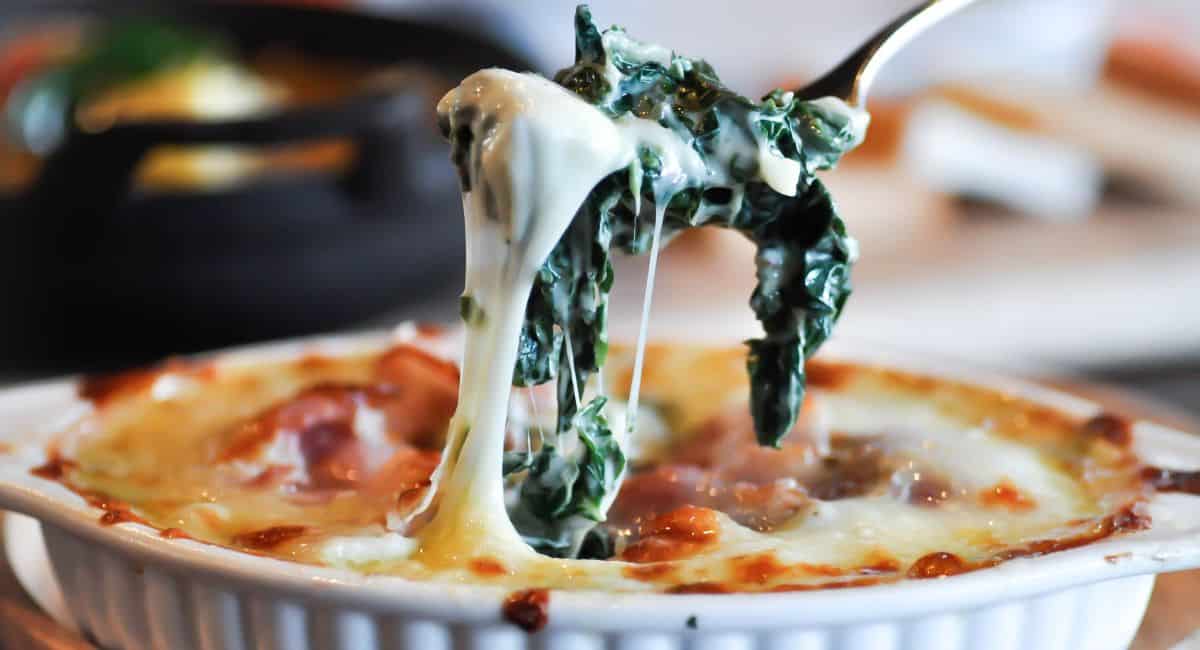How Long Does Spinach Dip Last? Shelf Life and Storage Tips
The shelf life of spinach dip is a topic of interest for those looking to maintain both its taste and food safety standards.
Typically, homemade spinach dip lasts about 3 to 4 days in the refrigerator when stored properly in an airtight container. The longevity of the dip can be affected by factors such as the presence of dairy products like cream cheese, sour cream, or mayonnaise, which are common ingredients in many recipes.
Store-bought spinach dip can offer a longer shelf life due to preservatives and packaging designed to extend freshness.
An unopened container of commercially made spinach dip can often remain good until its expiration date. However, once opened, it should be consumed within a similar timeframe to homemade varieties—generally 3 to 4 days if refrigerated promptly and appropriately.
It’s essential to note that dips containing less perishable ingredients may last slightly longer, but close attention to any changes in smell, taste, or texture is crucial when determining if the dip is still safe to eat.

How Long Spinach Dip Lasts: Proper Storage and Shelf Life
As a Certified Health Coach many people ask me about storing spinach including spinach dip. I have researched this topic in the past and while writing this article. Let’s examine the topic closely.
Proper storage methods are crucial for extending the shelf life of spinach dip while maintaining its freshness. Adhering to recommended practices ensures the dip stays safe for consumption until its expiration date.
Refrigeration Guidelines
When storing spinach dip in the refrigerator, one must always use an airtight container to prevent moisture and contaminants. The optimal temperature for a refrigerator is below 40°F (4°C).
Spinach dip typically lasts in the fridge for about 3 to 4 days. Beyond this period, the dip may spoil and become unsafe to eat.
- Store in Airtight Container: Prevents contamination and moisture exchange.
- Refrigerator Temperature: Keep below 40°F (4°C).
- Shelf Life in Fridge: Approximately 3 to 4 days.
Freezing and Thawing Spinach Dip
To extend the shelf life beyond refrigeration, one can freeze spinach dip. When freezing, it should be placed in a freezer-safe bag or container, which can keep it fresh for up to 3 months. It is crucial to seal it properly to protect against freezer burn and flavor loss.
- Freezer Storage: Use freezer-safe containers or bags.
- Shelf Life When Frozen: Up to 3 months.
To thaw frozen spinach dip, transferring it to the refrigerator for several hours or overnight is recommended. This gradual thawing process helps maintain the texture and flavor integrity of the dip.
It is generally advised not to refreeze previously thawed spinach dip, as this could compromise its quality and safety.
- Thaw in Refrigerator: Gradual thawing retains quality.
- Avoid Refreezing: To prevent deterioration of texture and safety.

Factors Affecting Longevity
The shelf life of spinach dip is predominantly influenced by the types of ingredients used and how they interact with factors that contribute to spoilage. Understanding these elements is crucial for maintaining the quality and safety of the dip.
Ingredients Impact
Dairy Products: Spinach dip often contains dairy ingredients like sour cream, mayonnaise, and cream cheese. These components can significantly affect the dip’s longevity. For instance, the presence of preservatives in store-bought dairy products may extend the shelf life compared to dips made with fresh dairy.
- Fresh Spinach vs. Preserved: The use of fresh spinach as opposed to frozen or canned can cause the dip to spoil more rapidly due to the higher water content and absence of preservatives.
Here is a brief breakdown of dairy components and their typical impact on longevity:
| Ingredient | Impact on Longevity |
|---|---|
| Sour cream, Mayonnaise, Cream Cheese | Can contain preservatives that extend shelf life |
| Fresh dairy products | Shorter shelf life due to the lack of preservatives |
Signs of Spoilage
Sensory Changes: The first indicators of spoilage are changes in odor, texture, and appearance. A sour or off-putting smell, mold development, or a change in texture (especially if it becomes overly watery or separates) signifies that the spinach dip should not be consumed.
- Bacterial Growth: Bacteria can thrive in dairy products if the spinach dip is left at temperatures above 40°F. Consuming dip with signs of bacterial growth can be unsafe.
Here is a checklist for detecting spoilage:
- Odor: Does the dip have a sour or unusual smell?
- Texture: Has the texture changed to become watery or lumpy?
- Mold: Is there any visible mold, particularly in cheesy or dairy-rich areas?
- Color: Has the color of the dip darkened or become discolored?
Recognizing these factors and regularly checking the spinach dip can help ensure its freshness and safety for consumption.
If you have any questions to ask me about this article don’t hesitate to comment below or email us. You can find an email on our contact page.
Read More Spinach Articles
How to Store Spinach in the Fridge
Article Resources
- FDA: Commodity Specific Food Safety Guidelines
- Utah Sate University Extension: Spinach
